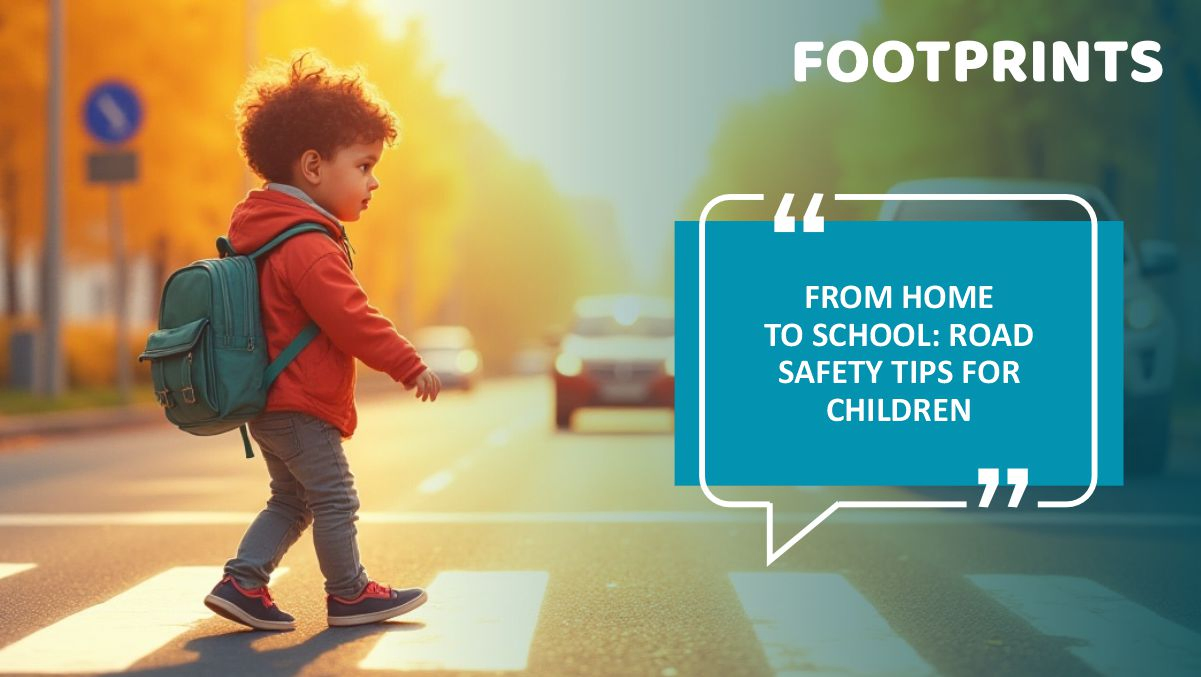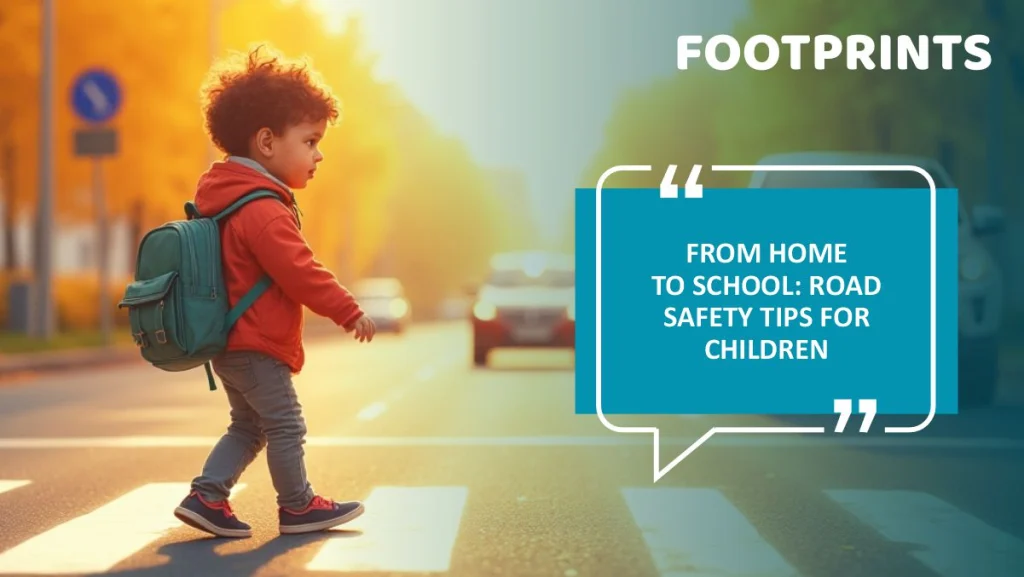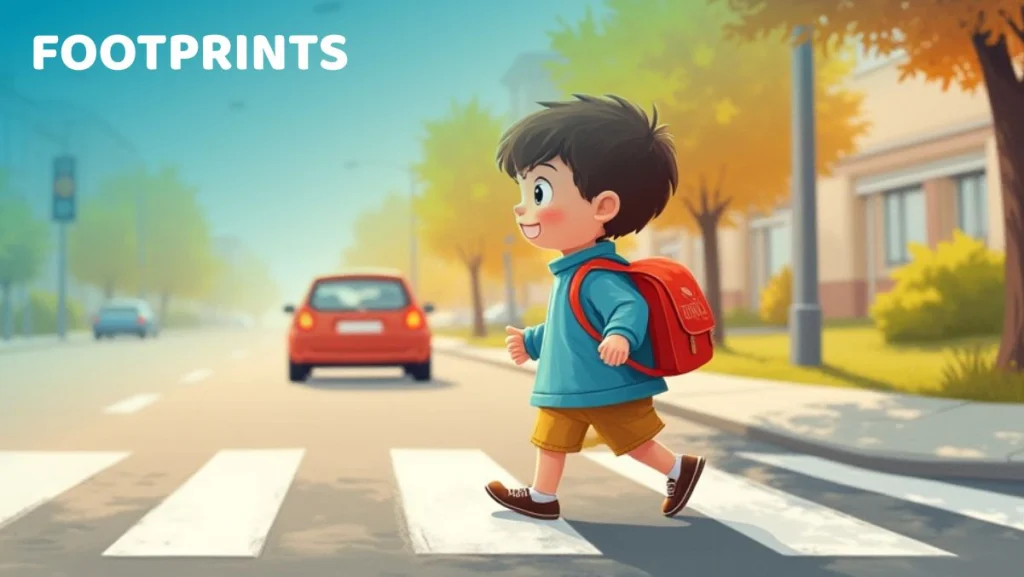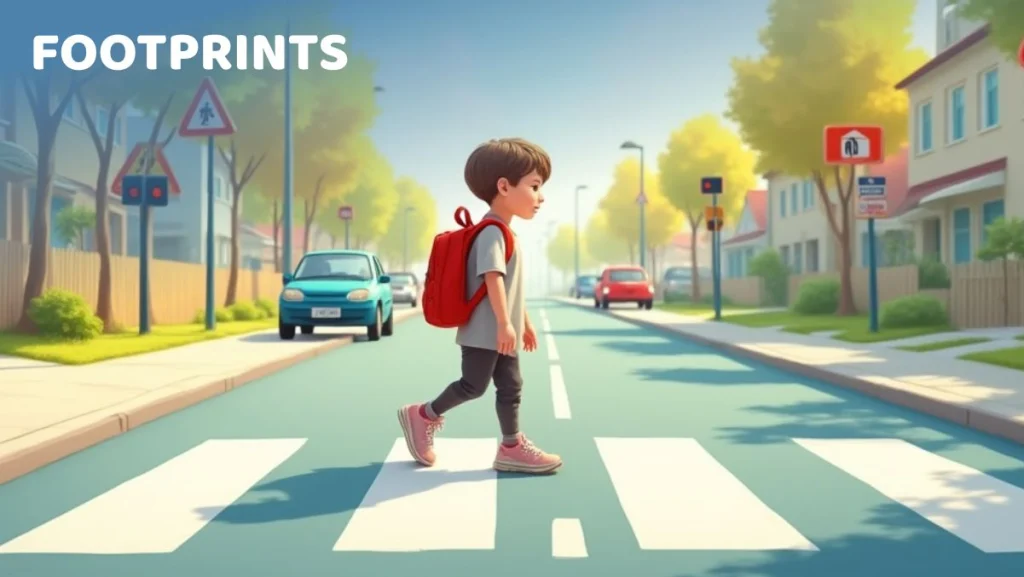

Among the essential life skills that children need to be taught early is road safety. Whether they’re walking to school or cycling in the neighborhood, they are subject to real risks. The good news, however, is that these risks can be significantly reduced by building awareness about traffic safety rules for children early.
From recognizing traffic signals to following pedestrian paths while walking or cycling, there are some basic road safety rules that children must know. There are enough and more coachable moments to teach children these traffic safety rules as they travel from home to school or anywhere else, for that matter. So here goes:
Road Safety Rules for Students
1. Look Left, Right, and Left Again Before Crossing
Now this is a road safety rule that generations have grown up learning. Before crossing a road, it is imperative to look first towards your left, then to the right and then to the left again. The rule ensures that children remain alert and are aware of any approaching vehicles.
2. Use Pedestrian Crossings
Children need to be taught early to use Zebra crossings to cross the road. When the importance of road safety signals is instilled early, the probability of them growing up to be responsible citizens only increases. Children must be similarly taught to walk on the footpath, away from the traffic.
3. Hold an adult’s hand
Young children will benefit from being taught to hold the hand of a responsible adult while crossing the road. It sure gives them an added safety layer. On an aside, such children grow up to be protective adults themselves.
4. Avoid distractions
In today’s times of fragmented attention spans, it is imperative that children be taught not to sport headphones or be engrossed in a game while crossing the road.
5. Wear a helmet
If at all the child rides a bicycle, it is important to teach them to wear a helmet early. A properly fitted helmet is often the only thing that stands between a fatal injury in case of any road accidents.

6. Wear Bright Clothing
Children should also be encouraged to wear bright, reflective clothing. That way they are more likely to be spotted by the driver and the chances of any accident are reduced. This is especially important in times of inclement weather, when visibility is affected.
#7. Understand Road Signs
It is also imperative to introduce children to basic road signs such as stop signs, pedestrian crossings, school zones and more.That way, children will be more attuned to road safety norms. Taking them through the road safety rules chart as well as the process of navigating safety on the ground can be great starting points.
8. Be Aware of Stranger Danger
When on the road, children should also be taught to be cautious of strangers. If approached, they should keep their distance and seek help from a trusted adult if they feel unsafe.
9. Teach the Bigger Picture
Beyond just knowing the traffic rules, children should understand why road safety matters and what role they can play to ensure it. By being alert, they not only protect themselves but also the lives of others. This sense of empathy and social responsibility, when inculcated early, lasts way beyond their childhood years.
10. Be a role Model
We know that children learn by observation far more than they do by instruction. It is important, therefore, that as adults we follow all traffic rules. Whether it is wearing the seatbelt or stopping at the traffic signal, it is when our children see us follow every traffic rule that they are motivated to do the same.

To Sum Up
Raising well rounded individuals means much more than equipping children with academic skills. At Footprints Preschool we believe in the holistic development of our students. To this end we are committed to create responsible citizens of the world who navigate the world with responsibility. Teaching them road safety & traffic rules is a small effort in that direction.
FAQs: Road Safety Tips for Children
- Why is teaching road safety to children so important at an early age?
Children are vulnerable road users, and building awareness early helps form lifelong habits that reduce risk. - What’s the correct way to cross the road safely?
The rule is to look left, right, and left again before crossing. This helps children check for vehicles in both directions. - When should children use a pedestrian crossing?
Always! Zebra crossings provide a safer route across roads where drivers are more likely to stop for pedestrians. - Should children wear helmets even for short bicycle rides?
Yes. A properly fitted helmet can prevent serious head injuries, even during short trips. - Is it really necessary to wear bright clothing while walking or cycling?
Absolutely. Reflective, bright clothing makes children more visible to drivers, especially in poor weather or low light. - What kind of distractions should children avoid when on or near roads?
Headphones, mobile games, and texting can reduce awareness and reaction time. - How can children learn to recognize and understand road signs?
Through visual aids like safety charts, interactive games, and real-life observation with adults explaining their meanings. - What role do adults play in teaching road safety?
Adults are role models. When children see adults follow traffic rules, they’re more likely to adopt those habits themselves. - What should a child do if approached by a stranger while on the road?
Maintain distance, avoid conversation, and seek help from a trusted adult immediately. - How can schools contribute to road safety education?
Schools can hold safety workshops, use simulations, and incorporate road safety into their curriculum to reinforce safe behavior.
Aditya brings over ten years of expertise as a Senior Marketing Strategist. He’s an expert at developing captivating marketing tactics that regularly provide excellent outcomes. His innovative strategies have demonstrated a track record of increasing organizational reach and engagement, showcasing his extensive knowledge of the contemporary marketing landscape.

